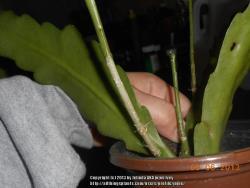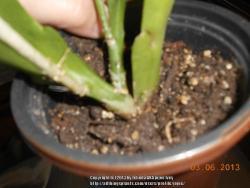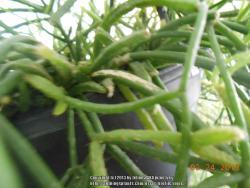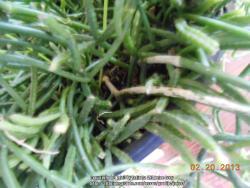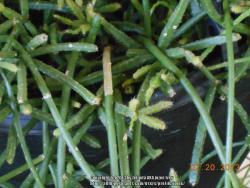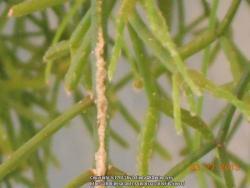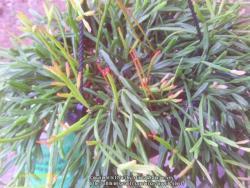I have read that the peroxide/water mixture is also used for killing some fungus,mold etc... problems on plants,i read an article on it, i just need to look for it.It gave different mixture ratio's for different plants & problems.
First i need to identify what is going on with them 2 plants.You see the white place's on the stems,it almost looks like just scarring but it just showed up one day & has spread.Then i noticed it on one of my Epi's.
Have you ever seen anything that looks like the white places on parts of the stems on any of your plants? I don't know if you have many house plants never heard you speak of them.I haven't been on the house plant forum lately either. but both of these are house plants but i do put them out in the spring.The Rhip. is a good size HB and the Epi was a leaf propagation from the beginning of last year.
Arif,Do you have any idea's or ever seen anything like this before?

this is the entire Rhipsalis plant,i will look to see if i have a picture of the other plant but i doubt i have one of it by itself.
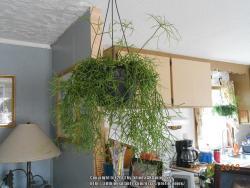
This is the only picture i could find of the whole plant,it's the one in the green & white ceramic strawberry pot. I will look for another.
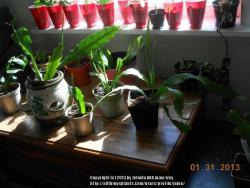
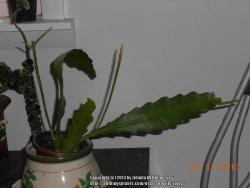
If anyone has any idea what's wrong with my plants i do appreciate any advice or opinions i can get to help!!! thank you

